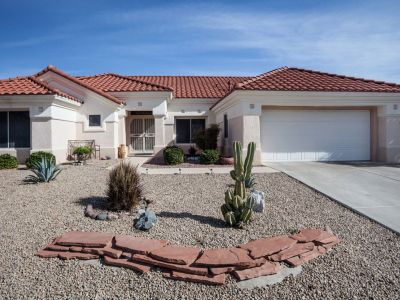Landscaping in the Southwest often leaves out fussy water-loving plants in favor of low maintenance, drought-tolerant landscape alternatives. Fortunately, there are many lawn alternatives that work well in these dry areas. Read on for information on Southwest alternatives to grass lawns.
Landscaping in the Southwest
It is a real pleasure to walk barefoot across thick, healthy turf grass but tending that kind of a lawn in the Southwest is no fun at all. Lawns require lots of water, as well as regular maintenance from mowing to pest treatments. Those landscaping in the Southwest often prefer to replace turf and traditional foundation plantings with less formal yards that look casual and natural. Using native plants and natural landscaping as alternatives in Southwest regions means less irrigation, less work, and more native birds and beneficial bugs.
Lawn Alternatives in Southwest Gardens
When it comes to gardening in the Southwestern regions of the country, xeriscaping just makes sense. This type of landscaping is not limited to rocks and a few cacti. Rather, xeriscaping uses many different and beautiful plants that just happen to be water-wise. While some desert gardens may retain a little turf grass close to outdoor living areas, others do not and replace the lawn entirely with grass alternatives. In a xeriscape landscape, areas that used to be lawn are often replanted with native ornamental grasses that can survive on whatever rain may fall. You’ll find not one but many southwestern lawn alternatives in xeriscape designs. Native grasses are one option to replace grass lawns. These tall grasses are allowed to grow in their natural shapes in graceful clumps, requiring little water and even less care. Other great options include wildflower gardens and cacti and succulent plantings. All are low water alternatives that make excellent choices for drought-tolerant residential landscaping. Sedges are also making appearances as lawn alternatives in Southwest gardens. Sedges are grass-like plants that are frequently mistaken for grass. However, they are low maintenance and require little care. Native, drought-tolerant sedge species definitely deserve consideration.
One sedge to consider is meadow sedge (Carex perdentata). This informal grass alternative only reaches 6 inches (15 cm.) in height and is drought tolerant when established. It is evergreen and keeps its color even in winter.For alkaline soil, you may prefer clustered field sedge (Carex praegracilis), a low growing California native.Another type of sedge to consider is Texas sedge (Carex texensis), a clumping sedge that stays about 4 inches (10 cm.) tall. It prefers shade.Berkeley sedge (Carex tumulicola) grows to 2 feet tall (61 cm.) in wet or arid soil, tolerating sun and shade alike.
